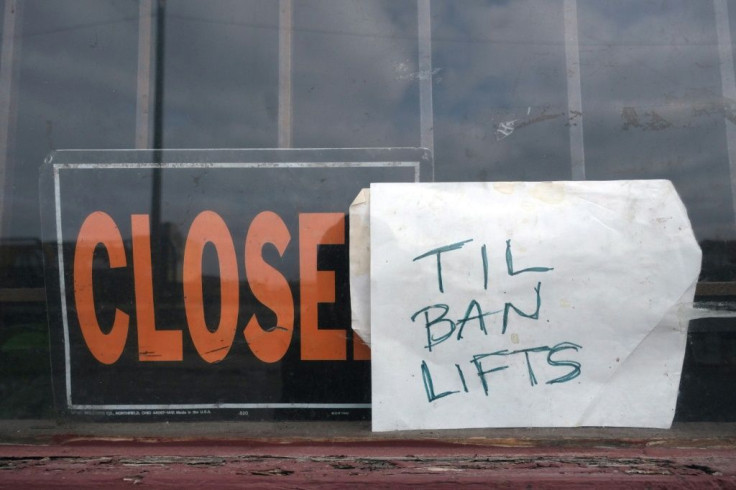Stock Market Futures: Dow, S&P 500, Nasdaq Nosedive On Over 1M Job Losses

KEY POINTS
- Wall Street's string of routs will continue Thursday as historic job loss of more than one million douse enthusiasm
- Futures are once again predicting a selloff
- The historically horrific unemployment report makes any rally unlikely
The stimulating news about the $2 trillion coronavirus economic stimulus package from the Senate that saw the Dow Jones Industrial Average and the S&P 500 stage their first back-to-back gains since February won't save them from tanking Thursday.
Dow Jones, the S&P and NASDAQ-100 stock futures took a nosedive after initially making gains in early Thursday morning trading. This, after investors anticipate with dread an earth-shaking national initial jobless claims report that will likely show unimaginable weekly job losses ranging from 900,000 to five million. The report is expected before the start of trading Thursday.
Dow futures fell 81 points, indicating an opening drop of around 135 points, at Thursday’s open. S&P 500 futures and NASDAQ-100 futures also foretold opening declines for both indices. There was no escaping the palpable gloom over the inevitable historic plunge in employment. The report from the Department of Labor will show unemployment insurance claims for one week ending March 21.
Seven of the country's top banks projected weekly unemployment claims ranging from fewer than one million to four million. Claims of this massive size have never been seen before in U.S. history.
Citi is the most pessimistic with estimates of more than 4 million claims. Morgan Stanley expects jobless claims to hit 3.4 million. Its chief U.S. economist, Ellen Zentner, said losses of more than three million in one week is "incredible."
"It's a stop in economic activity," she pointed out.
Goldman Sachs expects unemployment claims will jump to a high of 2.25 million due to the unprecedented layoffs. Bank of America forecasts 3 million. Pantheon Economics tentatively forecast losses ranging from two to three million. UBS, the most optimistic, forecast losses of only 860,000.
All these forecasts will totally eclipse the current record of nearly 700,000 set way back in 1982. The worst month during the financial crisis of 2008-2009 saw nonfarm payrolls plunge by 800,000. The headline unemployment rate was 24.9% during the Great Depression.
Morgan Stanley forecasts U.S. GDP will plunge 30.1% in the second quarter following a sharp drop-off in activity in March. This historic plunge could push the unemployment rate from current historic lows to an average of 12.8%, one of the highest on record since the 1940s, said the bank. This massive jump in unemployment was unimaginable for a jobs market that had seen continuous monthly growth over the past 11 years until February.
“What investors really need to gain confidence into repositioning for growth is data that suggests the … outlook for risks for the coronavirus itself are improving,” said Todd Jablonski, chief investment officer of Principal Portfolio Strategies at Principal Global Investors.
“I think it’s key to not apply pre-crisis fundamentals against post-crisis prices to try to determine where value sits."
© Copyright IBTimes 2024. All rights reserved.





















